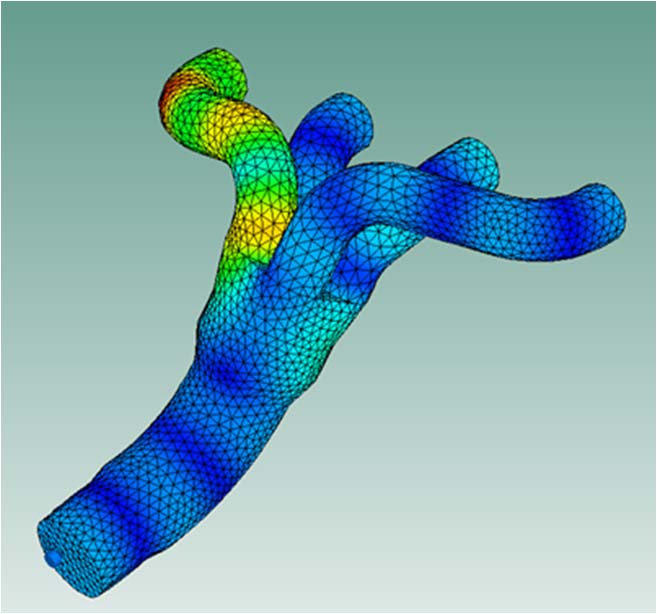The Acoustic Finite Element (FE) Module gives you all the functionality you need to add fully coupled FE acoustic finite elements cavity subsystems to your VA One models.

It is ideally suited for creating accurate acoustic structural FEM models of enclosed acoustic cavities at low frequencies and for optimizing the low frequency performance of poroelastic noise control treatments.
Benefits
- Create accurate acoustic FEM models of the response of acoustic cavities at lower frequencies (when the response of an acoustic cavity is controlled by a small number of dominant acoustic modes)
- Quickly and easily find the optimal location and lay-up of poroelastic noise control treatments for maximum absorption at mid and low frequencies
- Create fully coupled structural acoustic models (account for full coupling between FE structural subsystems and FE acoustic cavities)
Features
- Inbuilt volume mesher (easily converts between SEA and FE cavities)
- Automatic creation of FE area junctions between FE structural subsystems and FE acoustic cavity subsystems using AutoConnect functionality (full support for non-compatible meshes and modal projection)
- Inbuilt Acoustic FE solver for calculating acoustic modes and natural frequencies of FE acoustic cavities
- Easily apply velocity constraints to surface regions of FE cavity subsystems
- Easily apply impedance boundary conditions to cavity faces and area junctions
- Create efficient models of layered poroelastic noise control treatments applied to surface regions of an FE acoustic cavity (uses advanced computationally efficient algorithms based on the full Biot equations)
- Fully coupled solution (FE acoustic cavity subsystems are fully integrated within the VA One environment and solution)
Bombardier uses VA One, vibro-acoustics simulation software, to simulate structure-borne noise transmission in trains.
Hybrid FE-SEA analysis is a real leap forward when it comes to acoustical modeling technologies and is likely to set the standard for industrial computational acoustics of large structures for the future. The innovative integration of FE and SEA methods within one model allows the user to solve problems that cannot be addressed by applying SEA or FE methods separately."
ULF ORRENIUS, Senior Specialist: Acoustics and Vibration, Bombardier Transportation